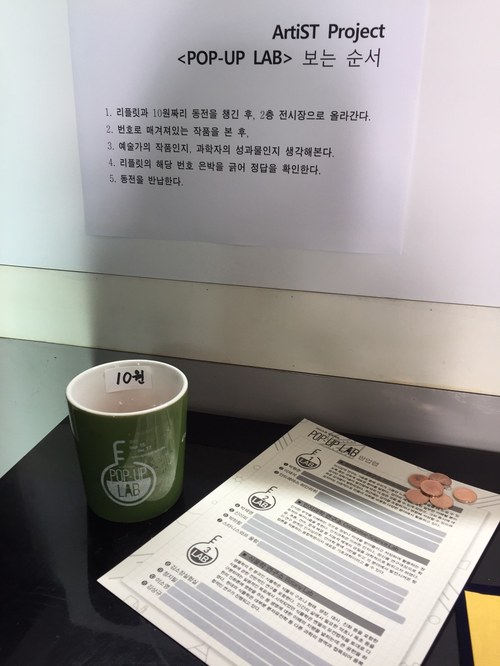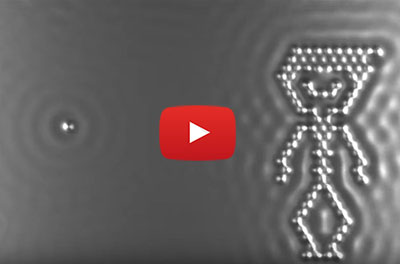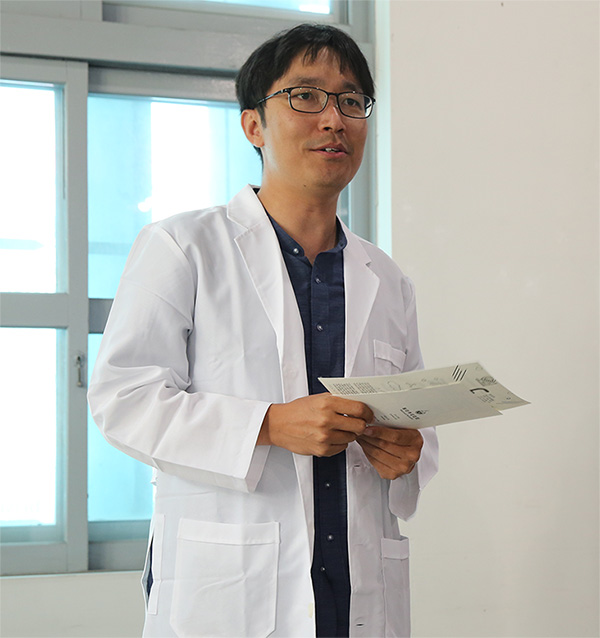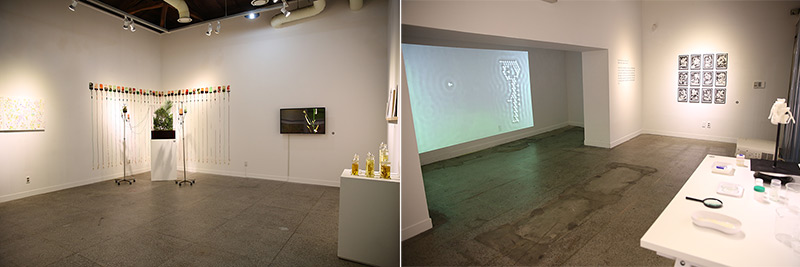주메뉴
- About IBS 연구원소개
-
Research Centers
연구단소개
- Research Outcomes
- Mathematics
- Physics
- Center for Underground Physics
- Center for Theoretical Physics of the Universe (Particle Theory and Cosmology Group)
- Center for Theoretical Physics of the Universe (Cosmology, Gravity and Astroparticle Physics Group)
- Dark Matter Axion Group
- Center for Artificial Low Dimensional Electronic Systems
- Center for Quantum Nanoscience
- Center for Exotic Nuclear Studies
- Center for Van der Waals Quantum Solids
- Center for Relativistic Laser Science
- Chemistry
- Life Sciences
- Earth Science
- Interdisciplinary
- Center for Neuroscience Imaging Research (Neuro Technology Group)
- Center for Neuroscience Imaging Research (Cognitive and Computational Neuroscience Group)
- Center for Algorithmic and Robotized Synthesis
- Center for Nanomedicine
- Center for Biomolecular and Cellular Structure
- Center for 2D Quantum Heterostructures
- Institutes
- Korea Virus Research Institute
- News Center 뉴스 센터
- Career 인재초빙
- Living in Korea IBS School-UST
- IBS School 윤리경영


주메뉴
- About IBS
-
Research Centers
- Research Outcomes
- Mathematics
- Physics
- Center for Underground Physics
- Center for Theoretical Physics of the Universe (Particle Theory and Cosmology Group)
- Center for Theoretical Physics of the Universe (Cosmology, Gravity and Astroparticle Physics Group)
- Dark Matter Axion Group
- Center for Artificial Low Dimensional Electronic Systems
- Center for Quantum Nanoscience
- Center for Exotic Nuclear Studies
- Center for Van der Waals Quantum Solids
- Center for Relativistic Laser Science
- Chemistry
- Life Sciences
- Earth Science
- Interdisciplinary
- Center for Neuroscience Imaging Research (Neuro Technology Group)
- Center for Neuroscience Imaging Research (Cognitive and Computational Neuroscience Group)
- Center for Algorithmic and Robotized Synthesis
- Center for Nanomedicine
- Center for Biomolecular and Cellular Structure
- Center for 2D Quantum Heterostructures
- Institutes
- Korea Virus Research Institute
- News Center
- Career
- Living in Korea
- IBS School
News Center
| Title | Mission: Identify artworks of scientists | ||||
|---|---|---|---|---|---|
| Name | Department of Communications | Registration Date | 2017-09-27 | Hits | 3669 |
| att. |
 thumb.jpg
thumb.jpg
|
||||
Mission: Identify artworks of scientistsIBS researchers take part in Pop-up Labs project of Daejeon Museum of Art # White pattern is laid out in curves on dark background. Is it a photo of the Milky Way spotted on a night sky? Maybe we have seen it before in biology textbook. Looking closely reveals there is no trace of brush marks. The image is clear and smooth. Is it a photo? Perhaps a painting? What is it trying to say? # Inside clear round petri dishes, we see leaves and sprigs. Some of the dishes have plastic flowers in them. One of dishes contains a grey substance that looks like mold has been growing inside of it. Items in the dishes are well-protected, undisturbed by external factors as if time has stopped for them. Who could be the creator of the piece? Is it a plant expert or artist who’s really into plants?
The first image is a microscope picture taken by a brain scientist (PARK Haram). The second image is a piece created by an artist (Kimsojang Lab). If no information was provided in advance, could you have guessed who is responsible for creating each piece? Works that could either be scientific or artistic are all in one place at the Pop-up Labs. The Pop-up Labs, hosted by Daejeon Museum of Art, are open till December 17 at the Daejeon Museum of Art Center for Creativity. Pop-up stores are a way to generate buzz by showcasing new products or having promotional events in a popular location. Daejeon Museum of Art’s ambitious plan to achieve aesthetic improvement for science and art is joined by scientists and artists who are active in their fields. The Pop-up Labs offer experiences unlike any other. The places are designed to look like an ordinary science lab and provide only very limited information to visitors. There are a total of three Labs. Three scientists from the Institute for Basic Science (IBS), one of partners for the exhibition, participated in the project to bridge science and art. The scientists tapped into their artistic side and produced great artworks taken from research outcomes. At Lab section 1 (Micro-senses Lab), director Andreas Heinrich of Center for Quantum Nanoscience with artists PARK Hyung Jun and LEE Jae Seok presents the smallest movie in the world. When working at IBM Almaden Research Center, director Heinrich created a one minute and 33 second long stop-motion animated film by placing a total of 65 carbon monoxide molecules on a cooper plate one by one. His film, A Boy and His Atom was awarded the Golden Lion at the Cannes Lions International Festival of Creativity. Curator KANG Yujin at Daejeon Museum of Art said, “The short film is very much like artwork as it challenges the limitation of data storage and inspires intellectual curiosity of viewers at the same time.” Director Heinrich added, “I always thought scientists have to communicate with the public. The film is meant to do that. I wanted people, especially children, to understand and enjoy science. With the pop-up project, I am happy to see more people interested in science.”
At Lab section 2 (Cognitive Science Lab), researcher Park Haram introduced his artwork. The piece, which is called Galaxy in the Brain, is a microscope picture of astrocytes in mouse hippocampus dyed white. Park Haram is part of Center for Synaptic Brain Dysfunctions and is under a PhD program at the Department of Biological Sciences in KAIST. Neurotransmission at synapse is an outcome of complex interactions between thousands of different kinds of proteins. It is also the simplest unit for brain activity. Astrocytes observed through a microscope resemble the Milk Way, and therefore the picture is named Galaxy in the Brain. “Some might say science and art have no common ground. Yet when studying each of them, you will find artistic science and scientific art,” said Park. He added, “It’s amazing to see people enjoying an exciting ensemble of science and art at the exhibition.” A visit to Cognitive Science Lab will reveal pieces created by artists PARK Jae Young and SIN Lfie, and mathematician Stanislaw Ulam. At Lab section 3 (Botany Lab), research fellow KIM Sang Kyu’s work is shown on a monitor. His footage captured the movement of a flower stalk that changes direction in the morning and at night using time-lapse photography. The researcher specializes in analyzing and studying wild plants like wild tobacco, and produce including beans and tomatoes in chemical, molecular, biological, and ecological perspectives. As part of his research, Kim is also working to prove genetic functions of plants using CRISPR technology. He is an inquisitive individual who is continuing the quest to solve the mysteries of nature. The works of artists JUNG Jipil, LEE So Young, and artists from Kimsojang Lab are also gaining much traction.
This is how the project was able to develop its audience. Visitors of the Art Center are encouraged to go and see the pop-up exhibitions. They are not given much information before experiencing the displayed works. When done, they are asked to guess who might be the artists behind the pieces. The exhibition offers visitors a unique experience of enjoying, both artworks inspired by science technology, and artistic and fascinating research outcomes. Director of the Museum LEE Sang-bong explained, “The project is designed to not only show the great collaboration between scientists and artists but also allow visitors to interpret the science and art of the exhibition.” Research fellow Kim Sang Kyu expressed his thoughts on the exhibition at the opening ceremony on the 15th with all artists. “Scientists always look for what’s unexplored and unknown. When we get lucky and solve a mystery in nature, what’s discovered becomes obsolete and we move on for a new adventure. The Pop-up Labs are a place where people appreciate the obsolete that’s remembered by only a handful of experts and reinterpret it as a form of art,” said Kim.
IBS Department of Communications, EunKyeong Go |
|||||
| before | |
|---|---|
| before |
- Content Manager
- Public Relations Team : Yim Ji Yeob 042-878-8173
- Last Update 2023-11-28 14:20
















